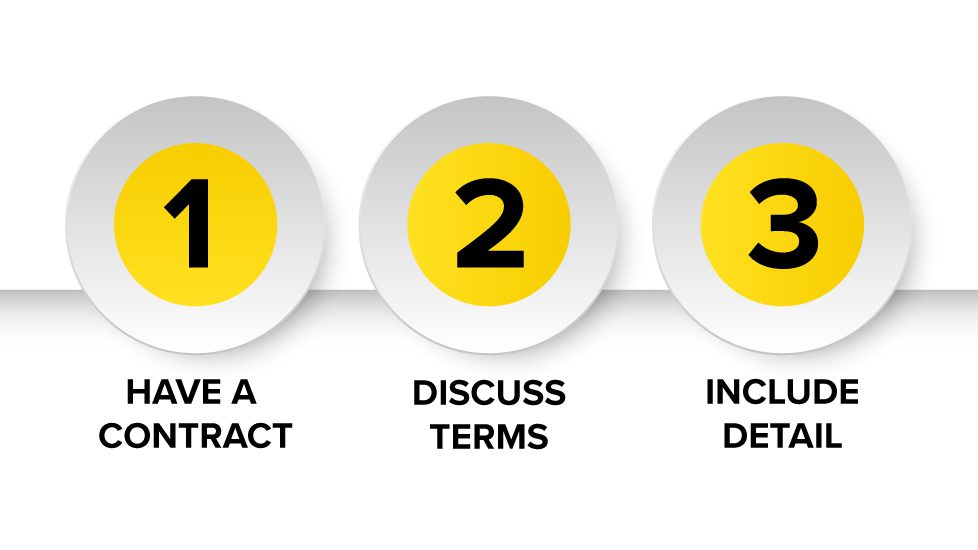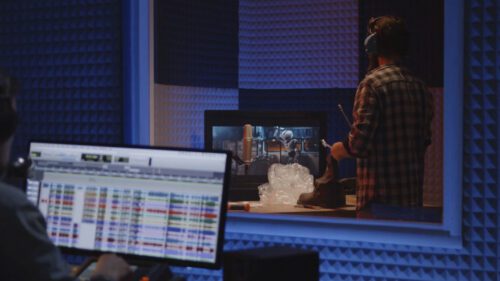As creative freelancers, we sometimes shy away from the business side of things. We want to edit videos, take photos, and develop websites without thinking about spreadsheets or taxes. Unfortunately, the business side needs to be managed in order for you to make a living doing what you love.
Managing cashflow requires having consistent work from a reliable portfolio of clients, forecasting your income and expenses, and having a backup plan to manage cash crunches. It’s time to learn how to get all three of these factors under control so that your freelancing practice can thrive.
Educate Your Clients on Payment Terms
If you’re a freelancer, you’ve probably had a client that has been difficult to collect payment from. This is the type of client that can lead to cash flow woes. You get to the end of a project, and suddenly they’re dragging their feet on paying you. What gives?
While it’s true that this is sometimes unavoidable because of bad clients, it’s more often due to a lack of communication or not setting expectations on how payment will be handled.

In my freelancing practice, here are the steps that I take to communicate with clients to ensure that cash flows in smoothly.
- For major projects, the contract should cover the expected payment terms so that everything is reviewed ahead of time.
- Before you ever agree to work with a client, make sure that you discuss payment terms and process. Let them know you’ll issue an invoice at an agreed-upon stage of the project, such as at major milestones or at the end of the project.
- When you issue an invoice, make sure to include all of the relevant details including the due date, terms, contact information, and payment information.
Pro Tip: When you find reliable clients that pay on time, ask them if you can increase the amount of work you do with them. It’s much easier to grow your work with existing clients than it is to find and vet new clients.
Forecasting for the Future
The most important part of managing your freelance cash flow is understanding what the future looks like. That includes estimating your revenue and expenses and making sure that the two don’t get out of balance. To make this easier, you should have separate accounts for business and for personal use. If you’re constantly pulling money from your business revenue, then you might not leave enough funds for your business expenses.
A great system is to periodically pay yourself a “salary” from of your freelance business account at a set amount. This will make your cash flow more predictable and ensure that you don’t overdraw your business funds. In time, as you acquire more clients and do more work, you can tweak the amount you’re pulling out of the business account to pay yourself (the individual), but the key here is having a system.
Besides having a system to pay yourself, here are some other tips for managing your cash flow.
- Maintain a spreadsheet with your total income and expenses—both for your personal accounts and for your business. This will help you understand your “cost of living” and how much you’ll need to pay yourself from your business account.
- Make a list of the annual items that you pay for that are significant. A few examples here include tax payments, software subscriptions like Creative Cloud and Dropbox, and professional membership dues. Make sure you account for these larger expenses in your budgeting.
- Keep some emergency savings aside for times when a client is behind on a payment or unexpected changes in revenue or expenses occur.
Not all freelancers have the luxury of working in a field where business is evenly spread over the course of a year. Particularly for seasonal businesses like wedding photography, you’ve got to use the abundant months of the year to manage your way through the leaner times. These tips will help you manage your cash flow over the year and maintain a healthy lifestyle.
How to Manage a Cash Crunch
Even with the best planning, there’s still a good chance that you’ll hit a cash crunch while freelancing. Maybe your expenses rise above revenue for a period of time or you lose a big client. No matter the problem, there’s always a way to fight through it.
Here are a few of my favorite tips to help you manage your freelance business during a cash shortage.
- Offer clients a discount on any outstanding invoices. For example, if an invoice is due in 30 days, incent early payment by offering a 5% discount if paid in the next 7 days. This reduces your earnings but can help you if you’re in a bind.
- Ask clients about any other work they might be looking to hire out and bid on that additional work.
- Offer clients “retainer” opportunities to pre-pay for your services. Issue an invoice at a discount for a flat rate amount that they can then use up over time.
Supporting yourself through these cash crunches is easier if you can plan for them. That’s why forecasting your cash flow is so important as I mentioned in the previous section. The sooner that you can see one of these lean cash times coming, the sooner you can take the necessary steps to keep things running smoothly.
Managing your cash flow as a freelancer is the difference between being able to practice your craft and returning to a more stable day job. The tips in this article can help ensure you get it right so that can keep doing what you love.



